When we were invited by Whole Foods Belmar to be their guests at the 2015 Slow Meat Fair held in Denver June 4-6, well it was one of those questions you just don’t even have to think about. Yes of course – we’re there!
We are both huge proponents of the Slow Meat credo: better meat, less meat. And we both prefer to buy our meat from Whole Foods because of their easy-to-understand rating system.
The tenets of Slow Meat:
- Learn to read labels. Whole Foods makes that easier with their 5-Step Animal Welfare meat rating system. (Their Level 1 rating is still better than almost everything you can buy at a conventional grocery store!)
- Go meatless at least one day a week. We call this going flexitarian, and you can do it practically pain free!
- Promote biodiversity. This means eating different kinds of meats and fish, heritage breeds, etc.
- Demand better meat. Wherever you eat — your work, your kids’ schools, etc. — start asking for better meat, or choose meat-free options.
- Eat nose-to-tail. That means discovering new-to-you cuts! Get to know your butcher and use our meat sheet to know how to cook them.
Ready to try your hand at slow meat? Whole Foods Belmar has generously donated a $50 gift card for one lucky reader (to be used for meat — or not!). Enter below, then read on for more on our fantastic Slow Meat experience.
We first ducked into the speaker’s tent to hear Temple Grandin speak. Highlights are as follows:
- “I feel very stronly about animal welfare because I can remember the bad old days…and the bad old days were BAD.”
- “Cattle done right can improve rangeland.”
- Fixing slaughterhouses? That’s easy. But Grandin said more than once that “outside the slaughter house things get a lot more complicated.” I’m not sure she meant it so broadly, but I took this to mean changing people’s attitudes and consumer behavior.
- Grandin was alarmed about “bad becoming normal,” something she was seeing across the country and across the industry where bad breeds, bad traits, and bad practices were being accepted and treated as normal.
- “We can make [the system] really really good. But we can’t make it perfect.”
The Terra Madre Kitchen featured native foods from all over the world. We tried the Navajo Nation foods presented by Chef Franco Lee, showcasing smoked churro lamb with prickly pear bbq sauce, sumac pudding, cornmeal cake, and blue corn cookies studded with pine nuts (these cookies were wonderful!!). Unfortunately we missed out on the rest of Terra Madre offerings — mostly due to a sudden bout of Colorado-style extreme wet weather. Later in the day the Terra Madre Kitchen had South African foods, Mexican, and foods of the American South.
We ate 4 slices (each!) of Tender Belly Bacon (oh my gaaaawwwwddd). If you didn’t already have a favorite bacon, this is it. We also split a Niman Ranch burger and duck fat French fries as prepared by Marczyk Fine Foods. Marczyk does burger night every Friday night through the summer so you can try this outstanding creation for yourself — seriously, one of the best burgers we have ever eaten.
Then, after nearly getting washed away by torrential rain and hail, it was onto the Cured Meat, Artisan Cheese, and Craft Beer Tasting and Seminar with Jeff Roberts. Cured meat is fermented meat, and Jeff is an expert on the the history, renaissance, and flavors of cured meats in the US. He choose beer over wine for the tasting since the carbonation in beer helps cut through the fats in cheese and hams.
Three Colorado beers were featured: Epic Brewing Company’s (Denver) Blue Ski Lager, Ska Brewing’s (Durango, CO) Rudie Session IPA (this one was SOOOO good!), and Breckenridge Brewery’s Oatmeal Stout.
We sampled 9 different cured meats from across the US all on one fine plate:
- Black River Meats Vermont Del Duca Prosciutto
- The Pig Restaurant North Carolina Lady Edison Country Ham
- University of Kentucky Hereford Ham
- Johnson County Hams North Carolina Mangalista Prosciutto
- Red Table Meats Minnesota Extra Vecchio Salami
- Salt and Time Texas Chile Pequin & Mexican Oregano Salami
- Cleaver & Co New Orleans Bresaola
- Smoking Goose Indiana Saucisson Rouge – this one was out of this world, made from pork fat, heart, liver, red wine, and chiles. They have a tremendously wide range of other meat products.
- Nduja Artisans, Chicago, Nduja – Crazy! It’s a kind of Calabrian spreadable salami! Let me repeat – spreadable salami! Like a salami pate, bright red like a red pepper dip, spiced with harissa, and a variety of Mediterranean chiles. Unreal!
Addtionally, 2 cheeses were presented: First Snow, an ash-coated bloomy-rind goat cheese from Jumpin’ Goat Dairy in Buena Vista, CO. And Cacio Pecora, a sheep cheese from Fruition Farms in Larkspur, CO. [Insert every positive and effusive adjective you know here] – it was so good (and I don’t even/usually like cheese)!
To have all this curated on a plate by an expert was stunning. To think that these were the finest things Roberts, a full-time meat professional and professor, had found — the meats and flavors that had absolutely rocked his world — well you can imagine how staggering it was for our mere lay-foodie tastebuds.
We’re still processing and recovering from this meat onslaught, but without doubt it was a profound experience and one that further cemented our commitment to well-raised meats and the artisans who are doing amazing things with it!

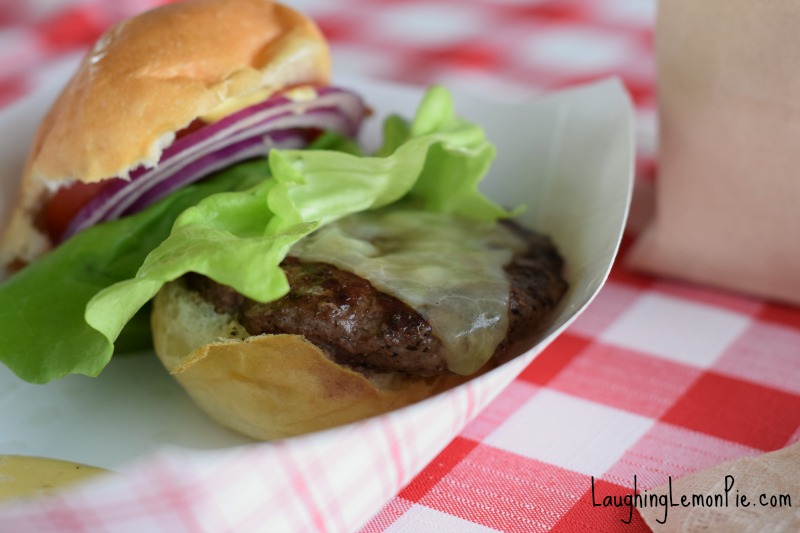
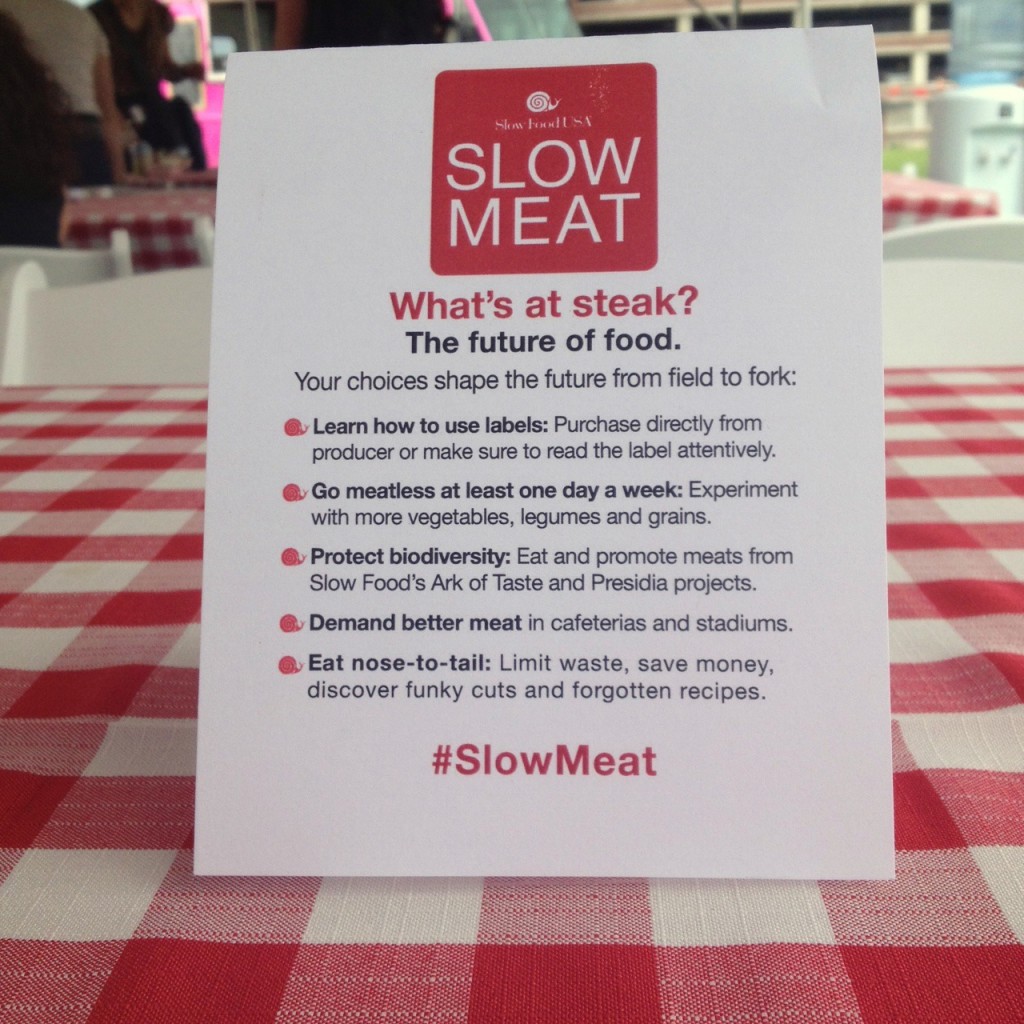
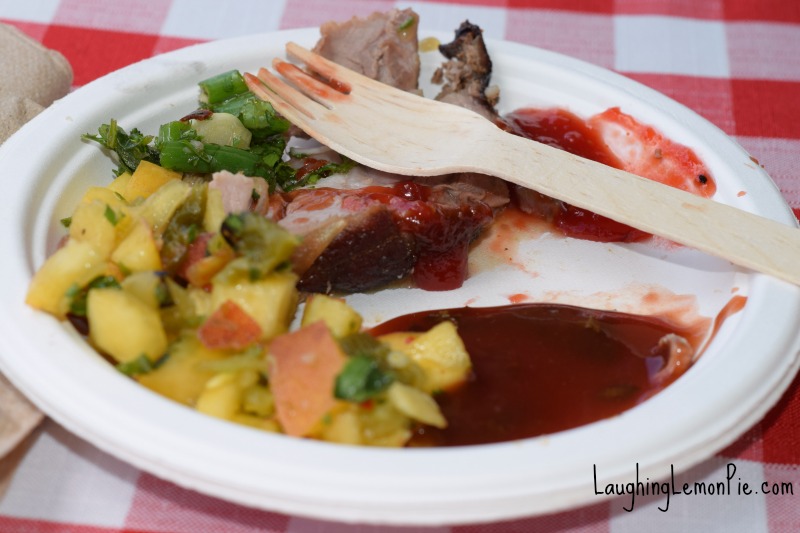
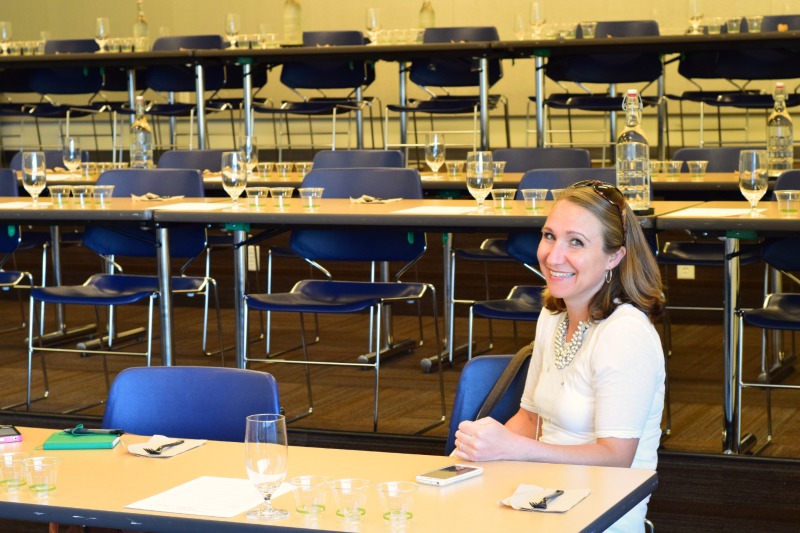

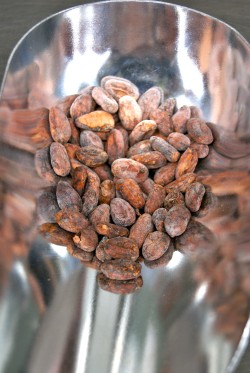

I only buy my meat at Whole Foods or get a whole animal from a local farm. I grew up where my mom raised all our meat and am just grossed out by traditional grocery store meat.
Me too Connie!
It’s amazing how one woman can be so pivotal and galvanizing for TWO separate causes – that Temple Grandin is responsible for ethical meat in this country PLUS being able to explain autism in an understandable way? Wow. It was a real treat to hear her speak.
I wish I would have known Temple was there. My son and I have read both of her books and they have helped so much with his aspbergers syndrome.